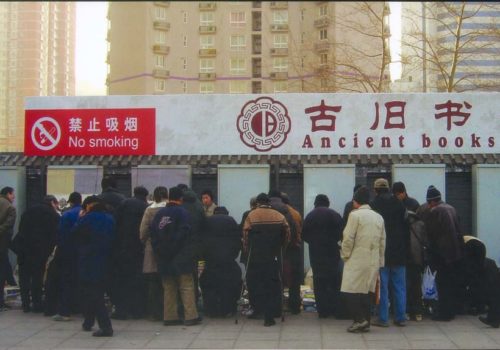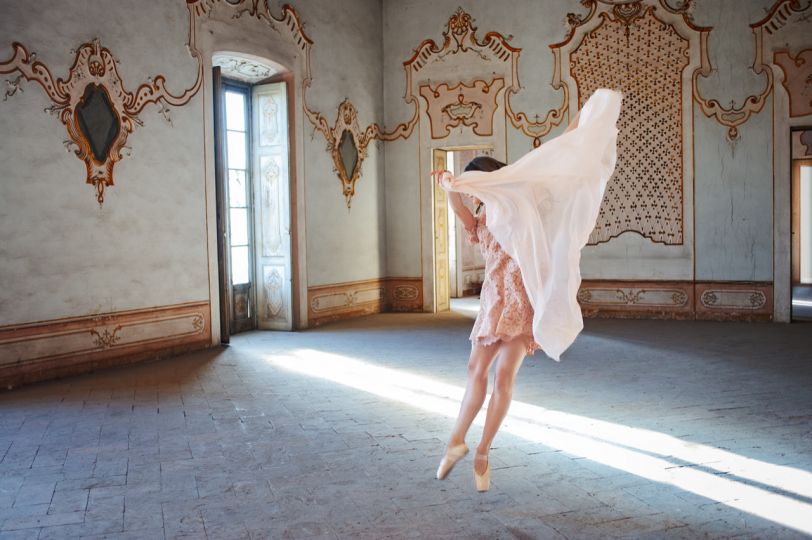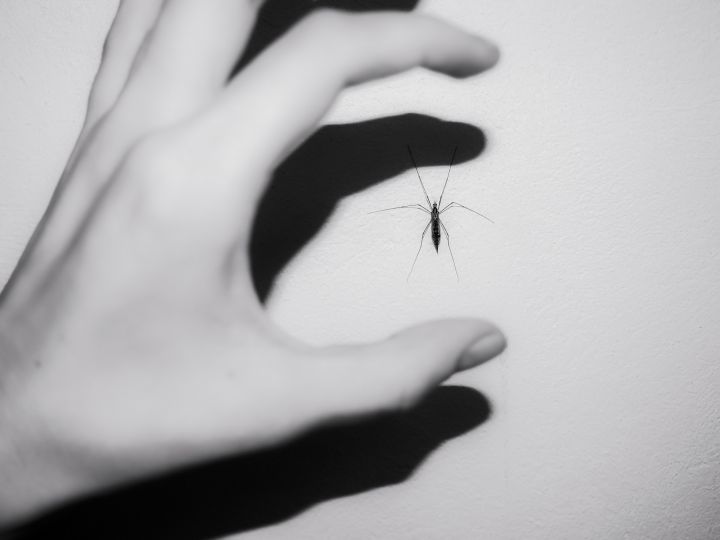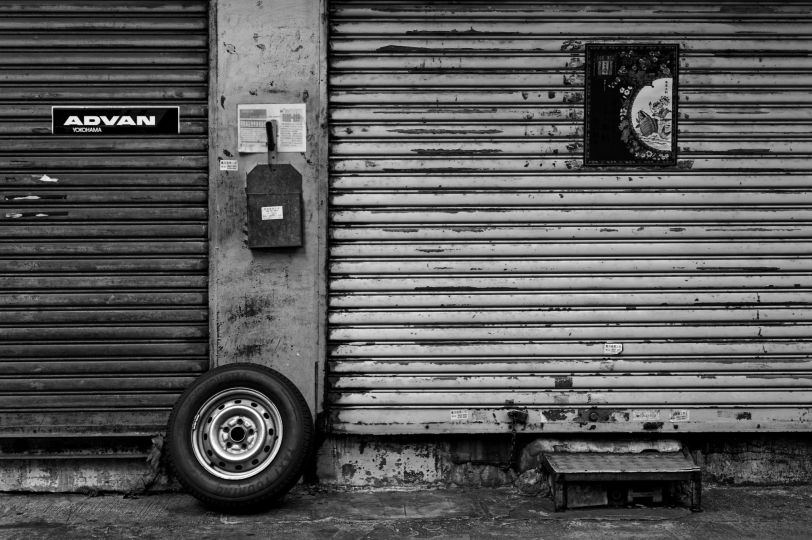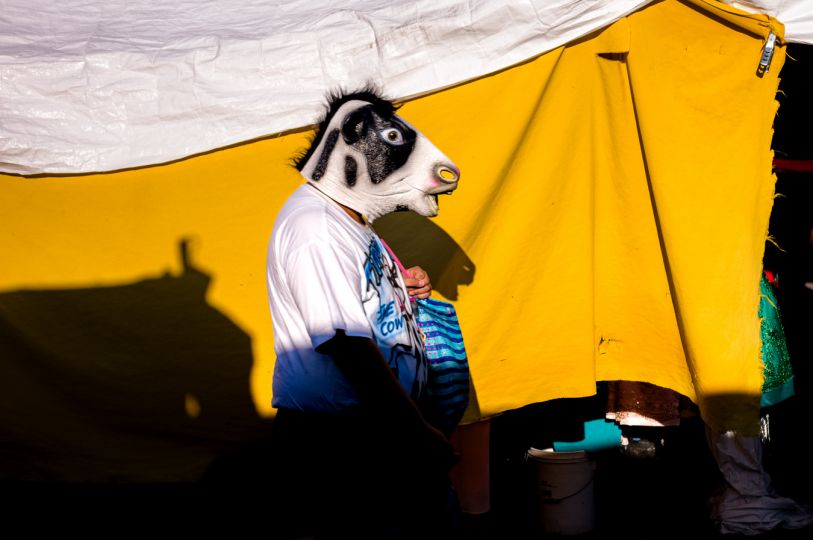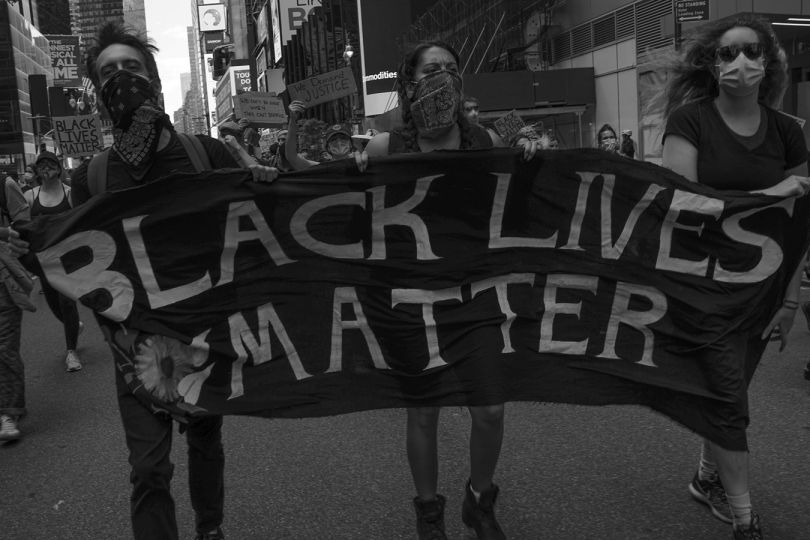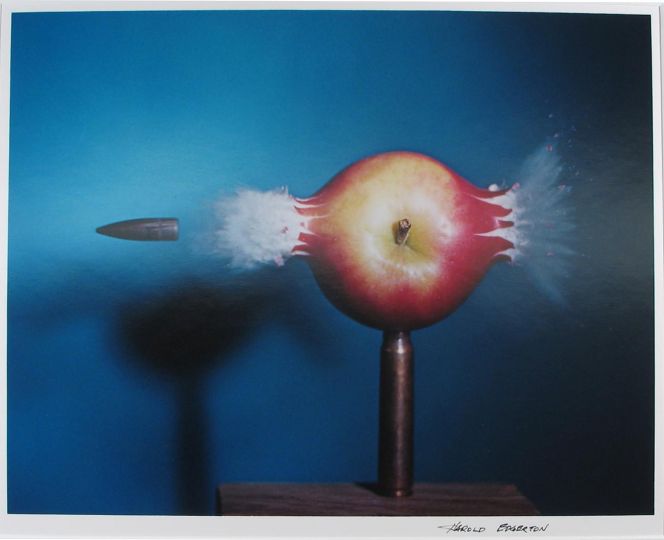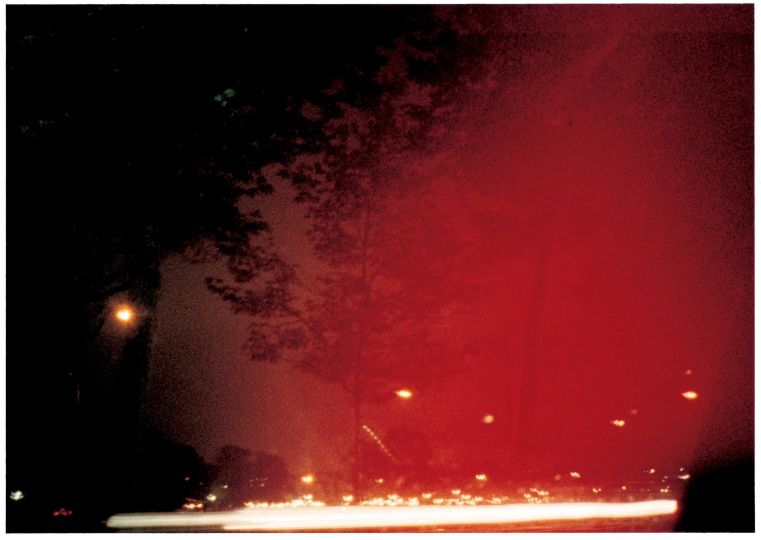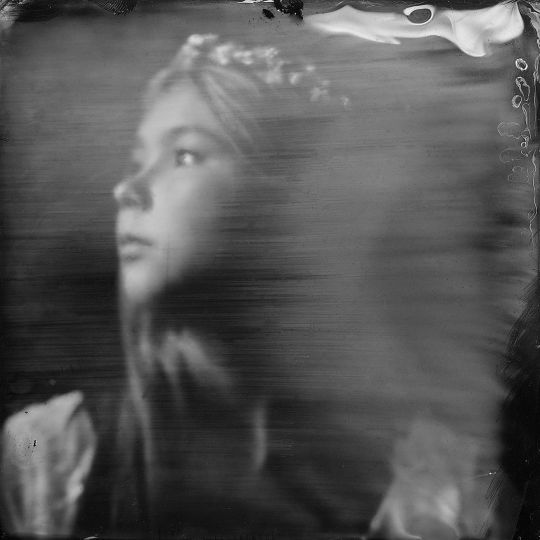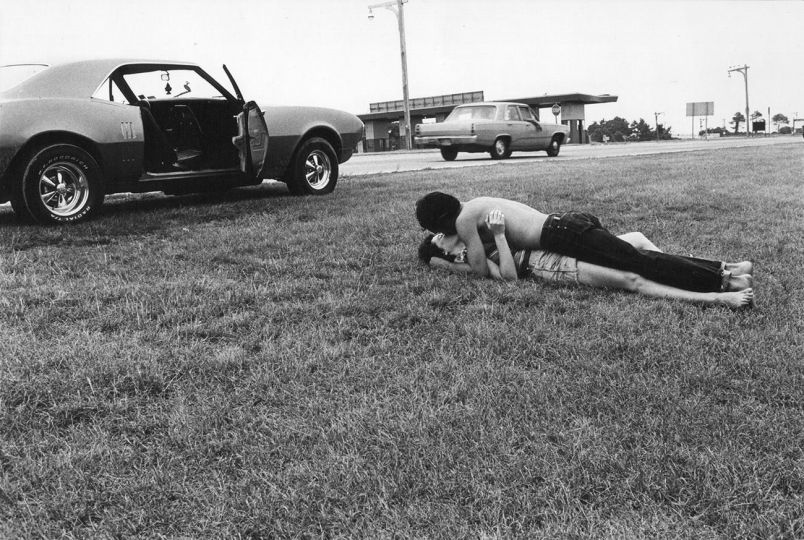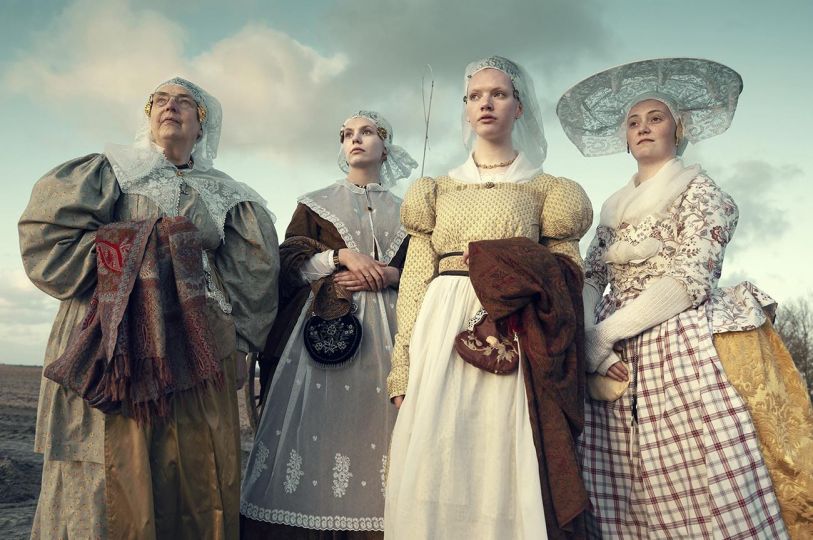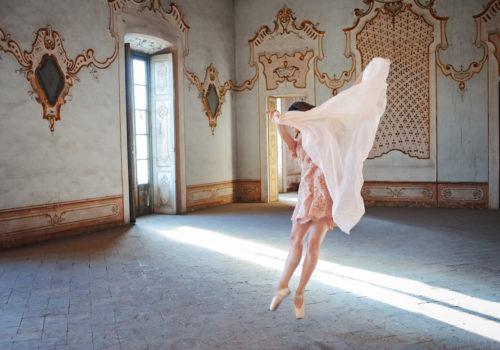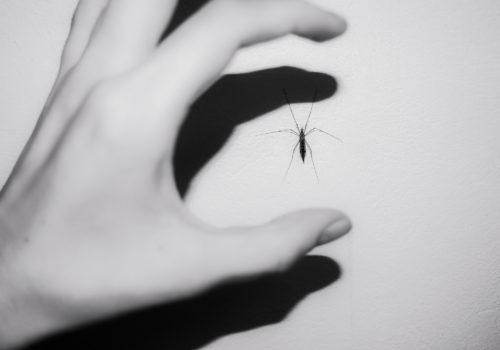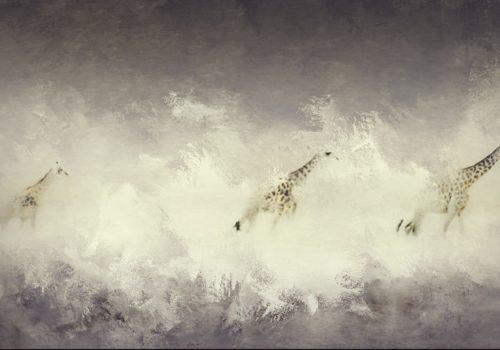As befits an artist who changes medium as often as he changes location, Antoni Muntadas is hard to pin down. Whether it’s in the street or a museum, on TV or on the web (not to mention his many teaching positions), for Muntadas there’s no wrong place to challenge received ideas and images.
But how does one describe this multifaceted artist, equally at ease in photography, video, film and graphic design? In a word (his own): “I translate into images what is happening in the world today.”
Muntadas: In the 1970s, when it was more difficult for me to explain my work, I said that there were three circles—I might have told you this 50 times, but it’s still useful—art, social sciences, and communication. Obviously, it’s more complex than that: art is related to thought, social sciences to politics, and communication to the economy. By juxtaposing the three, you reveal what they have in common. There are people in the art world who say, “Muntadas, your work is too sociological,” and other people say, “Your work is all about the media.” Yes, I agree, but I think that’s the way it is: people like to see things separately. I see them together.
It’s also true in relation to your use of different media since the beginning of your career: still images, moving images, sound, etc. But let’s return to the question you posed thirty years ago—on a billboard—with the project Media Eyes (1981): “What are we looking at?”
I always say: I don’t invent anything, it already exists. What I offer is a personal look at things, which I contextualize, or recontextualize, juxtapose or compare, construct and deconstruct. These are the apparati that allow me to question the image and see how its representation is made.
But the starting point is always things that already exist. I do not create objects. I create systems, and those systems result in new forms of understanding. The methodology of the projects grants me the necessary time. I cannot work quickly. I have to digest the things, understand them. When you spend time on a project, you become more critical. For example, in 1977-78, after having spent years in search of “objectivity,” I made a project for Life Magazine entitled On Subjectivity. It was about accepting subjectivity, but a critical kind of subjectivity. I selected fifty photographs from the book The Best of Life (1973) to make sure the images were interesting and taken by good photographers. Then I asked one hundred people from different backgrounds to write captions for the photographs. The book that came out of the project, On Subjectivity (1978), presents fifty photographs, each one accompanied by five very distinct captions. In the end, what we see is that the subjectivity comes not only from the images themselves, but also from the context and the culture that is viewing them.
That’s the whole idea behind the series of projects you’ve produced since 1995 under the title On Translation, where you identify the interpretative “filters” that surround archetypes of power, knowledge and other things from everyday life: the Olympics, the city, the newsroom, museums, bookstores, the gender indicators on bathroom doors, and so on.
Yes, in some ways my work is always about translation. Even Between the Frames (1983-1992) [a broad investigation of video interviews with major art world figures], anticipates the approach of On Translation.
One could say that there is nothing like a change of country or language to sharpen one’s views on this question. Just a glance at your bio—“Born in Barcelona, 1942, based in New York since 1971”—reveals the multiple cultures in your background: Catalan, Spanish, New Yorker. You studied industrial engineering in Barcelona.
I studied at the Escuela de Ingenieros Industriales but I was painting at the same time.
What brought you to New York?
Three reasons, all with P’s: personal, professional, political.
You spent time at an art school there, the Pratt Institute.
Yes, but not as a student. I had a scholarship and was assigned to the Pratt Graphic Center, for engraving. I was an instructor.
Teaching became a very important part of your work.
I began lecturing in 1975, first as a researcher at MIT’s Center for Advanced Visual Studies. That was in 1977. But I had already made a living by leading tours of exhibitions.
In New York?
Yes, at the Metropolitan Museum. Then I got involved with a teaching program, “Art Awareness.” All of my “sensory” projects on touch and smell, I applied them to my work at the museum. I was working with young people from Harlem and Brooklyn. They came to the museum and could do things like touch the sculptures while blindfolded.
We never talk about that.
No, but it was crucial for me to see how my work with senses could be applied. I consider my work a series of prototypes. Another prototype was Cadaqués Canal Local, the TV show we made in 1974, because at the time there was only one TV channel in Spain. [The show featured video reports broadcast in bars and casinos. A telegram from the Ministry of the Interior put an end to the project.]
Whenever I read something like, “He’s the greatest Spanish conceptual artist,” I always think it’s a little simplistic. Here you’re setting things straight.
People say to me, “But your work is always critical!” And I tell them, “Yes, it’s critical, but sometimes you have to look for an alternative.” The television we made in Cadaqués became a prototype for all local television in Catalonia. They saw what was possible. I was never interested in keeping it going. I make prototypes.
That explains your work with students across the world.
And also how the work keeps going.
Exactly, the work has kept going for 40 years. But how do you avoid the trap that many artists fall into, the one Robert Delpire once wrote about, where you end becoming a copy of yourself?
I may have an answer: I reject the idea of style because I think it’s a self-repeating structure. However, I defend the idea of a discourse, because it serves as a link among works. Style also provides a link, but in a formalist way, whereas discourse unites all of the thematic “constellations” that we have brought together in the exhibition Entre/Between.
How do you arrive at different “translations into images” from your research? How do you decide to use photography instead of video, or a billboard rather than a book, and vice-versa?
First, you always have the tools of analysis: surveys, systems of relationships, fieldwork, brainstorming, dialogue, and so on. For each project, the different elements are woven together to form a fabric: photographs I take myself, pre-existing photographs, collages of images, sound, architecture, etc. It’s all according to what the project requires. Sometimes a single image won’t work, a series of elements is required. Sometimes there are different media which fit together to show different the aspects, to express its complexity. Over time, the project comes together organically, and decisions are made. This is the process I use to arrive at a conclusion. The work is never mechanical.
Miriam Rosen
Visuals Courtesy Muntadas and Andrea Nacach
EXHIBITION
« Muntadas. Entre/Between »
Until January 20th, 2013
Jeu de Paume
1, place de la Concorde
75008 Paris France
+33 (0)1 47 03 12 50
Wednesday – Sunday 11am – 7pm
Tuesday – 11am – 9pm
From November 2nd to February 2nd, 2014
Vancouver Art Gallery
750 Hornby Street
Vancouver BC V6Z 2H7
Canada
CATALOG
“Muntadas. Entre/Between”
Texts by Daina Augaitis (curator), Eugeni Bonet, Jo-Anne Birnie Danzker, Ina Bloom, Marcelo Exposito et Gerald Raunig, Brian Wallis, Judith Revel, Marc Augé, Simon Marchan Fiz, Iris Dressler, Emily Apter, Raymond Bellour, Octavi Rofes, Lise Ott, Sven Spieker, Anne-Marie Duguet, Mary Anne Staniszewski.
Spanish / English
Actar/Museo Nacional Centro de Arte Reina Sofia/éditions du Jeu de Paume
304 pages + 80 pages, 20x28cm,
48 €

